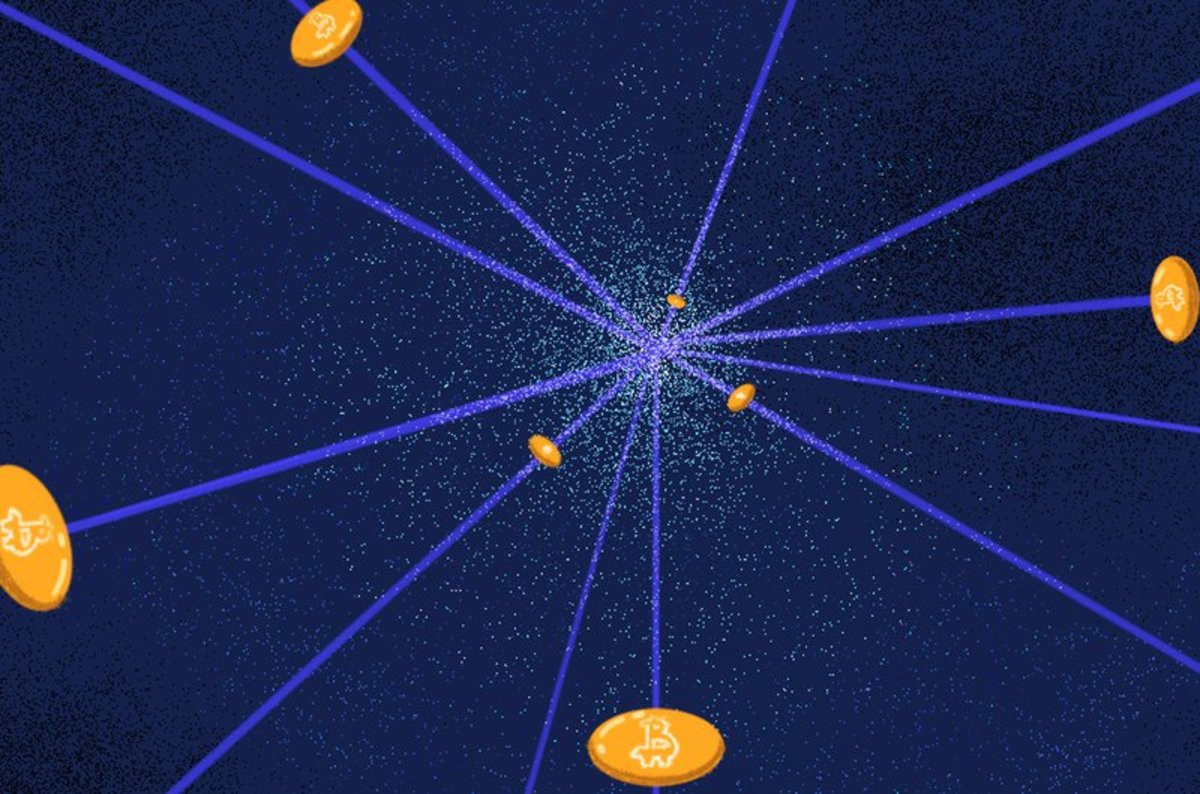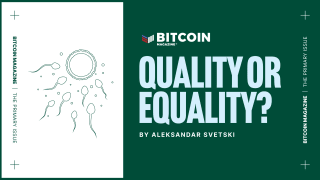“Those willing to accept bills and other forms of deferred settlement demonstrate to us that money is fundamentally hierarchical. If a merchant demanded gold payment upfront for the delivery of goods, it was his right to do so. But if another merchant accepted a bill that represented a promise to pay gold later, his willingness to defer final settlement is proof alone that the layers of money are not a construct of bankers but immanent in the human tendency to keep tabs with each other.”
- Nik Bhatia, “Layered Money: From Gold And Dollars To Bitcoin And Central Bank Digital Currencies”
With publishing numbers on the rise, the market is filled with far too many books that are heavier than they are useful. But Nik Bhatia’s “Layered Money: From Gold And Dollars To Bitcoin And Central Bank Digital Currencies,” published on January 18, 2021, bucks this trend by densely packing insights about the monetary system into fewer than 200 pages.
“Layered Money” is a paradigm-shifting book that provides an intuitive mental model with which to view the history, evolution and future of money. Concepts such as M1 vs. M2 money supply, treasury repo markets and eurodollars can be quite difficult to understand for lay people and “experts” alike. In “Layered Money,” Bhatia consistently turns these intimidating concepts into approachable knowledge with concise explanations and examples. In the end, the reader is left with a comprehensive understanding of why money is inherently hierarchical, the fragilities that exist within the current monetary infrastructure and how Bitcoin may provide the antifragile solution that humanity needs.
The central premise of “Layered Money” is to provide a new paradigm with which to view the concept of money. This approach aids the reader in understanding the increasingly complex monetary systems that humans have been building for centuries.
Readers who would find it difficult to dive straight into the current monetary system and its complexities need not fear: The book itself is built in progressive layers, starting with non-layered monetary systems (i.e., gold coins) before advancing to the first forms of layered money (i.e., bills of exchange backed by gold and silver). Once the reader has gained a solid foundation in understanding the basics, the layered money framework is applied to more complicated monetary systems, from the first gold-backed central banks to the mind-numbingly complicated system that dominates the world today.
One of the most impressive features of “Layered Money” is that it takes the Federal Reserve system (a topic that is unapproachable for most people) and neatly packages it into something that the everyday person can grasp by using the layered money framework. Rather than view all forms of money as the same, Bhatia builds the monetary pyramid from U.S. treasury notes to money market funds, to physical dollar bills and everything in between. He explains how each layer of the money pyramid relates to the other layers, and how the Federal Reserve, commercial banks and everyday citizens interact with these layers.
“Throughout the ages, currencies have ceased to exist because of one rudimentary fact: governments are unable to resist the temptation to create free money for themselves.”
After providing the reader with a clear lens through which to view the blurry Federal Reserve system, “Layered Money” helps identify both the hidden risks and potential solutions inherent in the monetary systems of the past, present and future. The reader is taken on a journey through various economic collapses, showing how each collapse led to an expansion in the reach and power of the Federal Reserve, taking it from a brand-new government entity to perhaps the most powerful entity on earth in less than 100 years.
In the latter half of the book, “Layered Money” dives into Bitcoin and central bank digital currencies (CBDCs). First, Bhatia teaches the reader about Bitcoin from the ground up, starting with Satoshi Nakamoto and the Cryptography Mailing List. Next, the reader is presented with the primary use cases of Bitcoin, along with its inherent limitations and the potential solutions to these limitations.
The layered money framework built upon in earlier chapters is applied to Bitcoin, helping the reader leverage an understanding of simpler monetary systems in order to grasp Bitcoin: “Second-layer BTC emerged for the same reasons second-layer gold did,” Bhatia wrote. “People were willing to hold claims on BTC just as people held claims on gold.”
Finally, “Layered Money” answers the most important questions with respect to central bank digital currencies (CBDCs): Why are central banks attracted to the idea? How might CBDCs be implemented? And how might CBDCs interact with Bitcoin going forward?
“In the future, the currency you use will not merely reflect your birthplace or country of residence, but your preferences,” Bhatia wrote.
A book review cannot come close to capturing all of the insights provided in “Layered Money.” That being said, here are a few examples of critical concepts that can be visualized and better understood by using the layered money framework:
- Banking and currency crises, in which people rush to “climb the pyramid of money, as holders of lower-layer money scramble to secure a superior, higher-layer form of money.”
- How and why central banks came to power, by allowing a government to “take control of the pivotal position between the first and second layers,” and “monopolize the issuance of second-layer money by eliminating public access to first-layer money.”
- The transition to today’s monetary system, where “U.S. treasuries would eventually replace gold altogether as the dollar pyramid’s only first-layer asset.”
While “Layered” Money deserves to be read in its entirety, one section stands out as the book’s ultimate conclusion, masterfully tying together the core concepts from each chapter:
“The underlying thesis of this book is that BTC will stand alone on the first-layer of money in the future. If only one word about Bitcoin could be used to describe why, we’d have to choose one coined only a few years ago in 2014 by author and seminal economic thinker Nassim Nicholas Taleb: antifragile.”
Bhatia goes on to say:
“Bitcoin is antifragile because it thrives off global monetary disorder within the dollar pyramid and is resilient to the threats, slander and legislation from dismissive bureaucratic entities. The plain truth about Bitcoin is that nobody controls it. It has become the first-ever government-free, universally accessible digital currency. And for these reasons, all currencies in the purely digital realm will face price discovery in BTC terms. This means that all digital currencies, from cryptocurrencies to CBDCs, will be measured in BTC, just like the Bretton Woods agreement in 1944 mandated all currencies be measured in USD.”
Ultimately, Bhatia envisions “a future in which BTC is the world reserve currency and only first-layer money.”
For any reader seeking to learn more about the history of money, how the current monetary system works or what the future of money may hold, I highly recommend “Layered Money: From Gold And Dollars To Bitcoin And Central Bank Digital Currencies.” The book can be purchased on Amazon in hardcover, paperback or Kindle form, or via other channels listed on the LayeredMoney.com website.
This is a guest post by Mitch, founder of YourBitcoin.Expert. Opinions expressed are entirely their own and do not necessarily reflect those of BTC Inc or Bitcoin Magazine.











